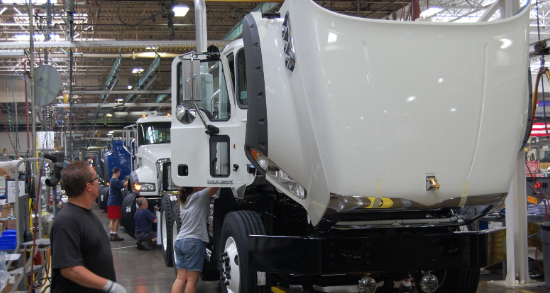CV Production Falls, Demand For Engines Muted In Tandem

Class 8 heavy commercial vehicle production to drop an eye-watering 66% this year
According to the recently released N.A. Commercial Vehicle On-Highway Engine OUTLOOK, published by ACT Research and Rhein Associates, truck and tractor production volumes are forecast to fall precipitously in 2020, and with them the demand for engines.
Kenny Vieth, President and Senior Analyst at ACT Research, noted, “Coming off the peak of 2019, we expect North American Class 8 heavy commercial vehicle production to drop an eye-watering 66% this year.” He added, “Retail sales will show a smaller reduction, but only because high inventory levels must be reduced to levels in-line with lower demand.” Vieth elaborated, “Freight demand has fallen, global supply chains have been severely disrupted, and even before COVID-19, the world was shifting toward increased e-commerce. The pandemic’s impact has only hastened that trend; in March, e-commerce recorded a 50% increase in home goods sales, and a more than 200% jump in on-line food deliveries.” He concluded, “All this has a direct correlation to the number and types of commercial vehicles needed, buffered currently by the industry’s ability to adjust production amid lock downs and shutdowns.”
Andrew Wrobel, Global Market Intelligence Commercial Vehicle and Off-Highway Forecasts of Rhein Associates, commented, “It is anticipated that trucks will increase use of smaller displacement engines, while the forecast predicts a gradual reduction in favor of the 12-14L category for use in tractors, as opposed to the over 14L category. We expect the 12-14L engine segment to dominate in tractor-use demand by 2024.” Regarding Classes 5-7, Wrobel said, “In this market, the current metric of interest is gasoline penetration, which continues to gain share, and is forecast to hit nearly 24% of the market by 2024.”
When asked about alternative fuels, Wrobel commented, “Last-mile delivery companies have taken the lead in requiring alternative fuel vehicles due to their proximity to consumers, favorable economics, and the enhancement of brand image. That said, oil prices have plummeted and fleets welcome the lower diesel costs, but we still see committed CNG users striving to meet corporate green initiatives with that fuel.” About non-fossil fuel alternatives, he explained, “Transit buses have seen the greatest application of electric medium and heavy-duty vehicles to date, but major truck OEMs and new entrant programs are underway. Electric medium and heavy trucks are coming, albeit slowly.”
Category: Equipment, Featured, General Update, News, Vehicles










